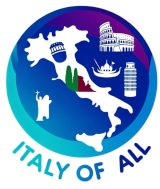The province of South Tyrol, also known as Alto Adige, is located in the northernmost part of Italy, bordering Austria and Switzerland. Known for its breathtaking Alpine landscapes, bilingual population, and unique cultural fusion, South Tyrol offers a distinctive blend of Italian and Austrian influences, making it a fascinating region both culturally and historically.
Geographically, South Tyrol is characterized by the majestic Dolomites and Alpine plateaus, which offer stunning scenery and are a haven for outdoor enthusiasts. The region is renowned for its extensive hiking trails, ski resorts, and mountain climbing opportunities. Its varied landscape also includes verdant valleys such as the Val Gardena and Val Pusteria, which are significant for both agriculture and tourism.
Historically, South Tyrol has a complex background. It was part of the Austro-Hungarian Empire until it was annexed by Italy after World War I. This historical shift is still reflected in the province’s governance and society, as it enjoys a high degree of autonomy compared to other Italian regions, allowing it to preserve its Germanic heritage. This bilingual status is evident in road signs, public communications, and education, which are all conducted in both Italian and German.
Culturally, South Tyrol is unique in its celebration of both Italian and Austrian traditions. Festivals such as the Christmas markets in Bolzano blend South Tyrolean folklore with Italian and German customs, creating a vibrant cultural landscape. The region is also known for its strong traditions in music, dance, and culinary arts, with each valley often having its own unique customs and dialects.
Cuisine in South Tyrol merges Tyrolean staples with Italian flavors, creating a rich culinary tradition. Dishes such as “speck” (a smoked, cured ham), “knödel” (bread dumplings), and “strudel” (particularly apple strudel) are popular. The region is also noted for its wine production, including varieties like Gewürztraminer and Lagrein, which reflect the diversity of the local terroir.
Economically, South Tyrol is one of the most prosperous regions in Italy. Its economy is driven by a combination of agriculture, particularly apple orchards and vineyards; tourism, thanks to its Alpine resorts and natural beauty; and a well-developed industrial sector, including crafts and renewable energy technologies. The region’s economic policies often focus on sustainability and innovation, drawing on its natural resources and cultural heritage to foster growth.
Despite challenges such as balancing economic development with environmental conservation and managing cultural integration, South Tyrol remains proactive in maintaining its unique identity while fostering economic prosperity. The region is at the forefront of renewable energy and sustainable tourism, setting an example of environmental stewardship.
Overall, South Tyrol offers a captivating mix of natural beauty, historical depth, and cultural diversity. Its commitment to preserving its unique heritage while promoting sustainable development ensures its continued significance as a vibrant and progressive region within Italy and Europe.
Comuni in South Tyrol Province:
- Ahrntal
- Altrei
- Aldein
- Bolzano
- Bruneck
- Brixen
- Deutschnofen
- Feldthurns
- Corvara
- Glurns
- Laives
- Kurtinig an der Weinstraße
- Martell
- Gsies
- Lana
- Karneid
- Kurtatsch an der Weinstraße
- Lüsen
- Graun im Vinschgau
- Innichen
- Franzensfeste
- Kastelbell-Tschars
- Klausen, South Tyrol (Kuens)
- Lajen
- Laas
- ** Kaltern an der Weinstraße
- Merano
- Hafling
- Freienfeld
- Margreid an der Weinstraße
- Kastelruth (Italian), Castelrotto (German)
- Moos in Passeier
- Neumarkt
- ** Olang
- Percha
- Partschins
- Proveis
- Prettau
- Prad am Stilfser Joch
- Ritten
- Rodeneck
- Salorno
- Pfalzen
- Ratschings
- Rasen-Antholz
- Sarntal
- Schlanders
- Schnals
- Sterzing (Vipiteno in Italian)
- Sexten
- St. Martin in Passeier
- St. Leonhard in Passeier
- Sand in Taufers
- Schluderns
- Stilfs
- Taufers im Münstertal
- Welsberg-Taisten
- Ulten
- Tramin an der Weinstraße
- Ortisei (Urtijëi)
- Völs am Schlern
- Terenten
- Vahrn
- Villanders
- Terlan
- Villnöß
- Tisens
- ** Welschnofen
- Vöran
